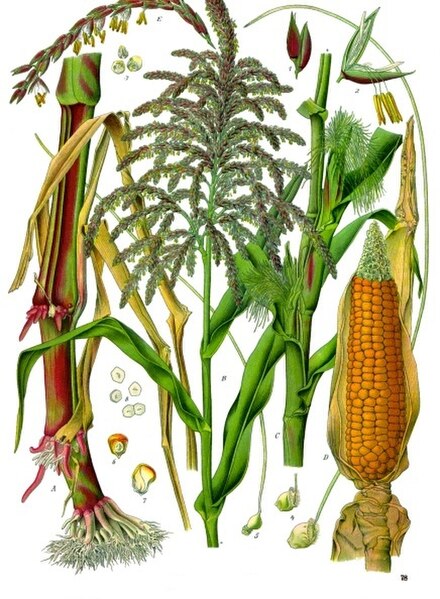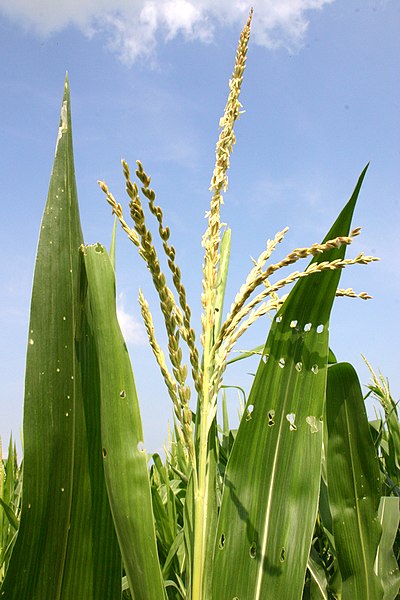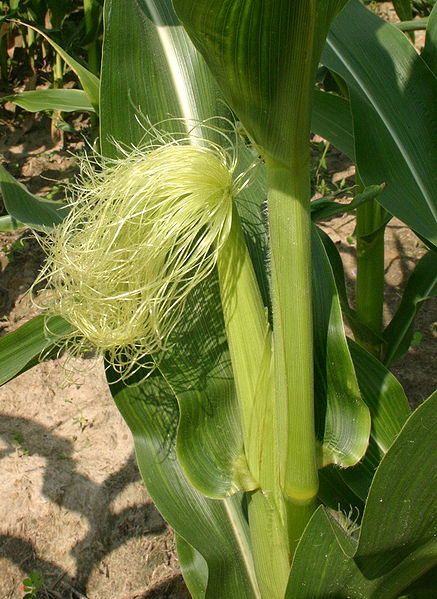Zea is a genus of flowering plants in the grass family. The best-known species is Z. mays, one of the most important crops for human societies throughout much of the world. The four wild species are commonly known as teosintes and are native to Mesoamerica.
Zea (plant)
teosinte (top), maize-teosinte hybrid (middle), maize (bottom)
Microscopic view of Zea seed
Image: Perennial Teosinte ear (Zea diploperennis) Detail
Maize, also known as corn in North American and Australian English, is a tall stout grass that produces cereal grain. It was domesticated by indigenous peoples in southern Mexico about 9,000 years ago from wild teosinte. Native Americans planted it alongside beans and squashes in the Three Sisters polyculture. The leafy stalk of the plant gives rise to male inflorescences or tassels which produce pollen, and female inflorescences called ears. The ears yield grain, known as kernels or seeds. In modern commercial varieties, these are usually yellow or white; other varieties can be of many colors.
Maize
Ancient Mesoamerican relief sculpture of maize, National Museum of Anthropology of Mexico
Many small male flowers make up the male inflorescence, called the tassel.
Female inflorescence, with young silk








